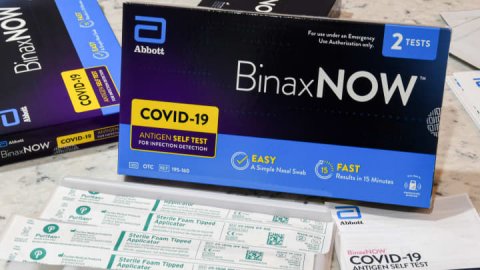
aren't the only ones feeling the impact of the gold rush.
Retailers with pharmacy businesses, such as , and , said increased demand for prescription helped for the second quarter.
But analysts note that those blockbuster treatments are minimally profitable for retail pharmacies – and may even come with margin headwinds.
"More recently, you're starting to hear retailers talk about these drugs. But I wouldn't say they're necessarily beneficiaries of the increased popularity," Arun Sundaram, an analyst at CFRA Research, told CNBC. "They're really not making much of a profit on the drugs. So it's really just a traffic driver and not really a profit pool for retailers."
Buzzy drugs like 's obesity injection Wegovy and diabetes treatment Ozempic have skyrocketed in popularity over the last year, with high-profile names like billionaire tech mogul among recent users.
Those treatments are known as GLP-1s, a class of drugs that mimic a hormone produced in the gut to suppress a person's appetite.
Other drugmakers, such as and , are developing their own GLP-1s in a bid to capitalize on a weight loss drug market that some analysts project could be worth by 2030. An estimated 40% of U.S. adults are obese, making successful treatments a massive opportunity for drugmakers.
But the boom in demand for GLP-1s is also being felt in other parts of the drug supply chain, including the pharmacies that dispense the prescription drugs to patients.
On an earnings call Thursday, Walmart CEO Doug McMillon said the company expects weight loss drugs to help for the rest of the year: "We still expect food, consumables, and health and wellness, primarily due to the popularity of some GLP-1 drugs, to grow as a percent total in the back half."
In June, likewise, Rite Aid CFO Matthew Schroeder said a jump in pharmacy revenue and the company's decision to hike its full-year revenue guidance was "due to the increase in sales volume in Ozempic and other high-dollar GLP-1s." Schroeder was referring to the hefty price tags of GLP-1s, which range from around $900 to $1,300 in the U.S.
He said those drugs have high sales amounts per prescription, but emphasized that the increased volume of GLP-1s has a "minimal impact" on Rite Aid's gross profit.
Kroger CEO Rodney McMullen similarly said during an earnings call in June that GLP-1 drug "sales dollars are a lot bigger than the margin dollars."
"We would expect the GLP-1 type drugs to continue but remember, the impact on profitability is pretty narrow," he said.
That's because GLP-1s like Wegovy and Ozempic are branded drugs with "very, very low gross margins," according to CFRA Research's Sundaram.
He said retail pharmacies generate high sales for each GLP-1 prescription they dispense but rake in low profits, which is having a slight negative impact on the overall gross margins of retailers like Walmart and Kroger.
UBS analyst Michael Lasser similarly highlighted in a recent note that gross margins for Walmart's U.S. business "would have looked even better had it not been for the contribution of the GLP-1 drugs since these carry very low profit rates."
Gross margins for branded medications are 3.5% on average for pharmacies, according to a from USC's Schaeffer Center for Health Policy and Economics. That suggests it may take years before a branded drug significantly contributes to a pharmacy's bottom line.
In contrast, gross margins for generic drugs – the cheaper equivalents of branded medications – are 42.7% on average for pharmacies.
There are several reasons for the lower margins of branded drugs. For one, branded drugs don't directly compete with other medications because they have patent protections. That gives drug manufacturers more power when they negotiate drug discounts with wholesalers, which purchase medications and distribute them to pharmacies.
As a result, there is "little room for wholesalers and pharmacies to capture large margins due to their relative lack of negotiating power," according to the , a trade association representing the manufacturers and distributors of generic prescription drugs.
But there are also other impacts of GLP-1s to consider beyond a retailer's pharmacy business.
For companies like Walmart and Kroger, GLP-1 drugs may be indirectly impacting other business categories in a positive way.
That makes some analysts less worried about margin headwinds in pharmacy: "The gross margin headwind is less of a risk overall for Walmart because any footstep in the door often ends up with multiple items in a basket," KeyBanc analyst Bradley Thomas told CNBC.
"Walmart is generally not a quick store that you just pop in on the way home," he said. "They're going to make multiple purchases, and I think we're seeing a lot of discretionary categories actually see a lift from some of this incremental traffic they've been getting lately."
Thomas added that GLP-1 drugs only fall under one part of Walmart's business: "If you're listing off the most important things that are driving Walmart's strong sales performance right now, it's probably not making the top 10," he said.
It's a slightly different situation for Rite-Aid and similar companies like and .
Those companies have retail pharmacies but also other business segments that are directly affected in different ways by the boom in GLP-1 drugs.
For example, CVS also operates a health insurer and pharmacy benefit manager, or PBM, which maintains formularies and negotiates drug discounts with manufacturers on behalf of insurers and large employers.
The increased demand for GLP-1 drugs is likely more of a headwind for health insurers since they have to cover the costly drugs for beneficiaries, but CVS says "the risk is manageable" in that business division.
Meanwhile, PBMs may benefit more from the increase in GLP-1 use since they negotiate significant discounts on drugs and drive competition between manufacturers – but they often don't pass along all of the savings to insurers.
"Each of the businesses kind of has GLP-1 in them and they are impacting them in a variety of different ways," CVS CEO Karen Lynch said during an earnings call last month.
Correction: The Association for Accessible Medicines is a trade association representing the manufacturers and distributors of generic prescription drugs. An earlier version misstated its name.




